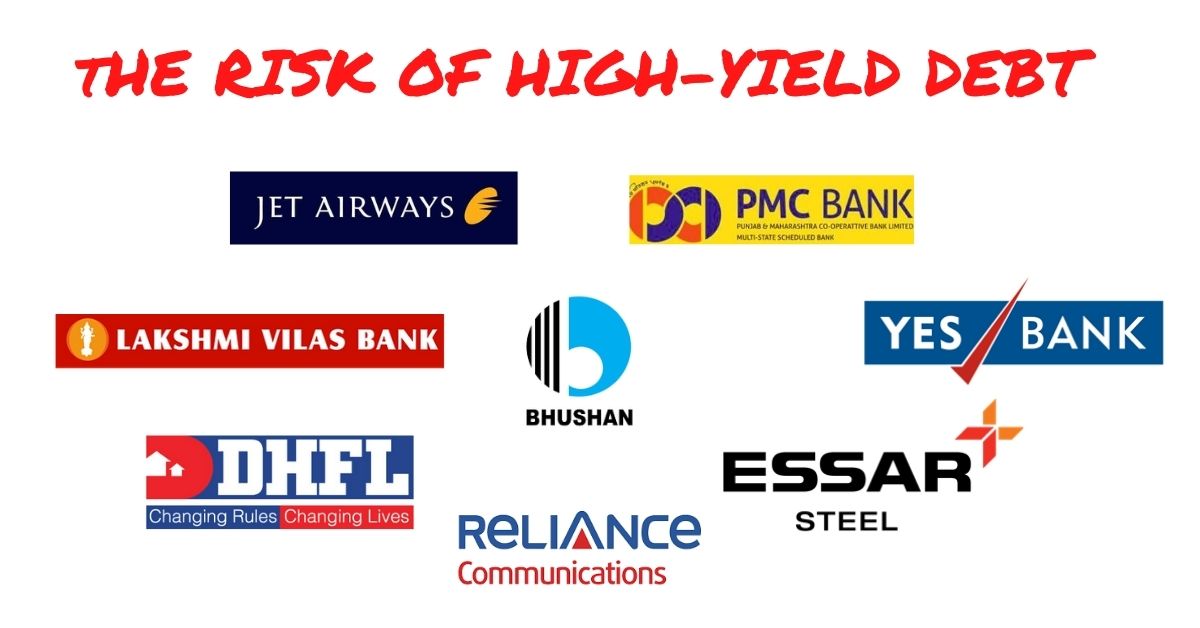
The Risks of Investing in High-Yielding Debt
High-yield bonds (popularly known as ""junk bonds"") are corporate debt securities that pay higher interest rates because of the low credit rating of the issuer (indicating a higher default risk).
Credit ratings are broadly classified into investment-grade rating and below-investment-grade rating.
Investment Grade
-
Rated BBB- or above
-
Lower Yields
-
Lower Default Risk
Below Investment Grade
-
Rated BB+ or below
-
Higher Yields
-
Higher Default Risk
Beware the Appeal of Higher Interest Rates
Higher interest rates can be very tempting to investors. But it is important to understand that this is accompanied with a higher default risk.
A company only pays higher interest rates, when no one is willing to lend them money at a lower rate.
The risk with high-yield bonds, is that your entire capital may be lost in case of a default. This makes them much riskier than equities.
In most cases, the risk outweighs the benefit of a high yield on the bond. The risk of default, depending on the economic and industry conditions, is dynamic.
A Few Examples of High-Profile Defaults
Over 2015-20, a number of high-profile companies defaulted on their bonds, leading to large losses for investors in these securities. The image below includes some of the most notable examples:

While junk bonds are risky, it's not synonymous with avoiding them in all cases. Very shrewd investors with a diverse portfolio of issuers, liquidity of the paper, and adequate resources usually benefit from the higher yield.
However, for the vast majority of investors, we would recommend the following:
Recommended Investments
Focus on safety of capital for your short-term goals, by investing in high-quality debt funds.
For longer-term goals, the risk-reward of equity is far superior to the very real risk of chasing higher yield bonds or lower-quality debt funds.
Recommended to Stay Away From
Unless you really know what you are doing, avoid higher interest paying bonds (no matter the temptation). Especially, stay aware of higher interest paying co-operative banks and real estate companies, both of whom are recurring culprits in losing investors money.
For Debt MF's, make sure you understand the category that you are investing in and the accompanying level of credit-risk. While there are very low-risk debt funds, there are also some much higher on the risk-spectrum. Don't simply invest based on historical returns.
